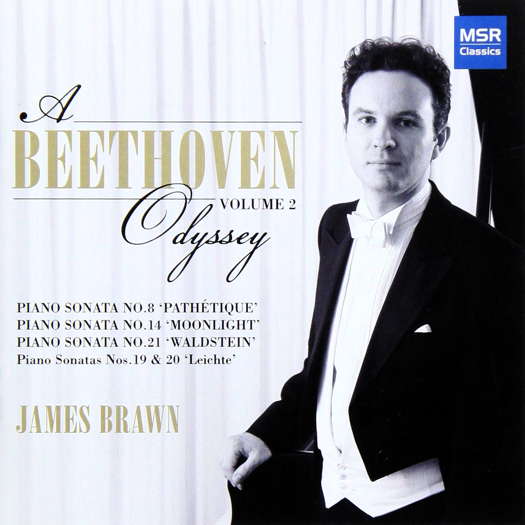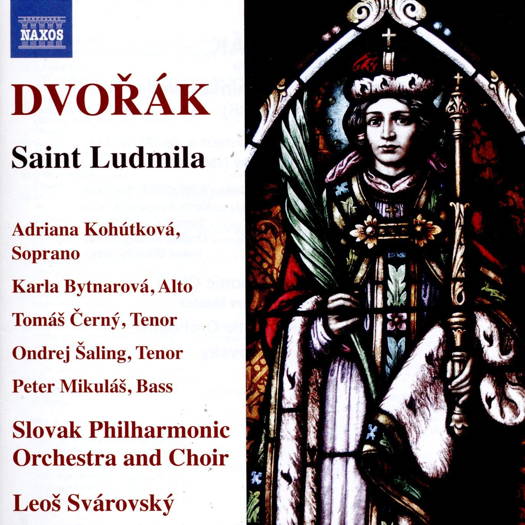- Ferris
- Gintas K
- Toshiaki Tsushima
- Auric
- Stephen Hough
- Arnold Bax
- Ethel Smyth
- Norwegian National Opera and Ballet
 SPONSORED: CD Spotlight. Perfect Indeed - More Beethoven from James Brawn, recommended by Andrew Schartmann.
SPONSORED: CD Spotlight. Perfect Indeed - More Beethoven from James Brawn, recommended by Andrew Schartmann.
All sponsored features >>
 DISCUSSION: What is a work? John Dante Prevedini leads a discussion about The performing artist as co-creator, including contributions from Halida Dinova, Yekaterina Lebedeva, Béla Hartmann, David Arditti and Stephen Francis Vasta.
DISCUSSION: What is a work? John Dante Prevedini leads a discussion about The performing artist as co-creator, including contributions from Halida Dinova, Yekaterina Lebedeva, Béla Hartmann, David Arditti and Stephen Francis Vasta.

Uplifting and Inspired
Dvořák's 'Saint Ludmila'
impresses GERALD FENECH
'A piece for the ages, passionately performed and recorded.'
Born in 1841 to a butcher and innkeeper, Antonín Dvořák rose from his humble beginnings to become one of the best loved composers of the Romantic era. By 1874 he was still lurking in the shadows of Smetana, and although he already had a number of compositions to his name, only a chance contact with Brahms set him off towards fame and fortune. Indeed, he was intensely admired outside his beloved Bohemia, and during the 1880s and 1890s he embarked on visits to England and America, where he was showered with accolades and honours.
In 1884 Dvořák visited England for the first time, conducting there his Stabat Mater to wild critical acclaim. By 1886 Dvořák was in England again for the fifth time. It seemed that in the space of three years the English had adopted the Bohemian as one of their own. Shortly after this fifth arrival, a commission for an oratorio for the Leeds Festival was soon in Dvořák's hands. 'Saint Ludmila', with a text by the poet Jaroslav Vrchlický, was performed in October of that same year with an orchestra of 120 players, a chorus of 250 and four distinguished soloists. This premiere took the audiences by storm, and the success of the evening resounded all over England. Without his wanting, Dvořák had really become a musical deity.
Listen — Dvořák: Darkness has returned to the nooks in the rocks and forests
(Saint Ludmila Part I)
(CD1 track 1, 0:01-0:52) © 2017 and 2019 Naxos Rights (Europe) Ltd :
The oratorio follows the pattern to which English choirs were accustomed in ever larger bodies of singers as in the Handel festivals, with a substantial part for the chorus. The story, divided into three parts, narrates the events of a very important event in Bohemian history: the conversion to Christianity of Ludmila and her husband Borivoj by Ivan the hermit. The husband was the founder of the Premyslid dynasty which ruled the country at the time. The piece ends triumphantly in Velehrad Cathedral with the baptism of the couple.
Listen — Dvořák: Oh, allow now to drop on our foreheads
(Saint Ludmila Part III)
(CD2 track 12, 2:02-2:57) © 2017 and 2019 Naxos Rights (Europe) Ltd :
History wise, Ludmila exerted great influence on her grandson Wenceslas, but religious and political turmoils caught up with her, and she was eventually martyred. Canonised, she is the patron saint of Bohemia. The work is so beautiful, uplifting and inspired.
Listen — Dvořák: Oh, what a picture to my eye
(Saint Ludmila Part II)
(CD2 track 4, 3:30-4:31) © 2017 and 2019 Naxos Rights (Europe) Ltd :
Indeed, stirring choruses, great arias and duets and some hugely descriptive orchestration abound at every turn, and undoubtedly this oratorio is in the same league as the composer's two other huge choral masterpieces, the Stabat Mater and the Requiem Mass.
A piece for the ages, passionately performed and recorded.
Copyright © 16 September 2019
Gerald Fenech,
Gzira, Malta

CD INFORMATION - DVOŘÁK: SAINT LUDMILA


